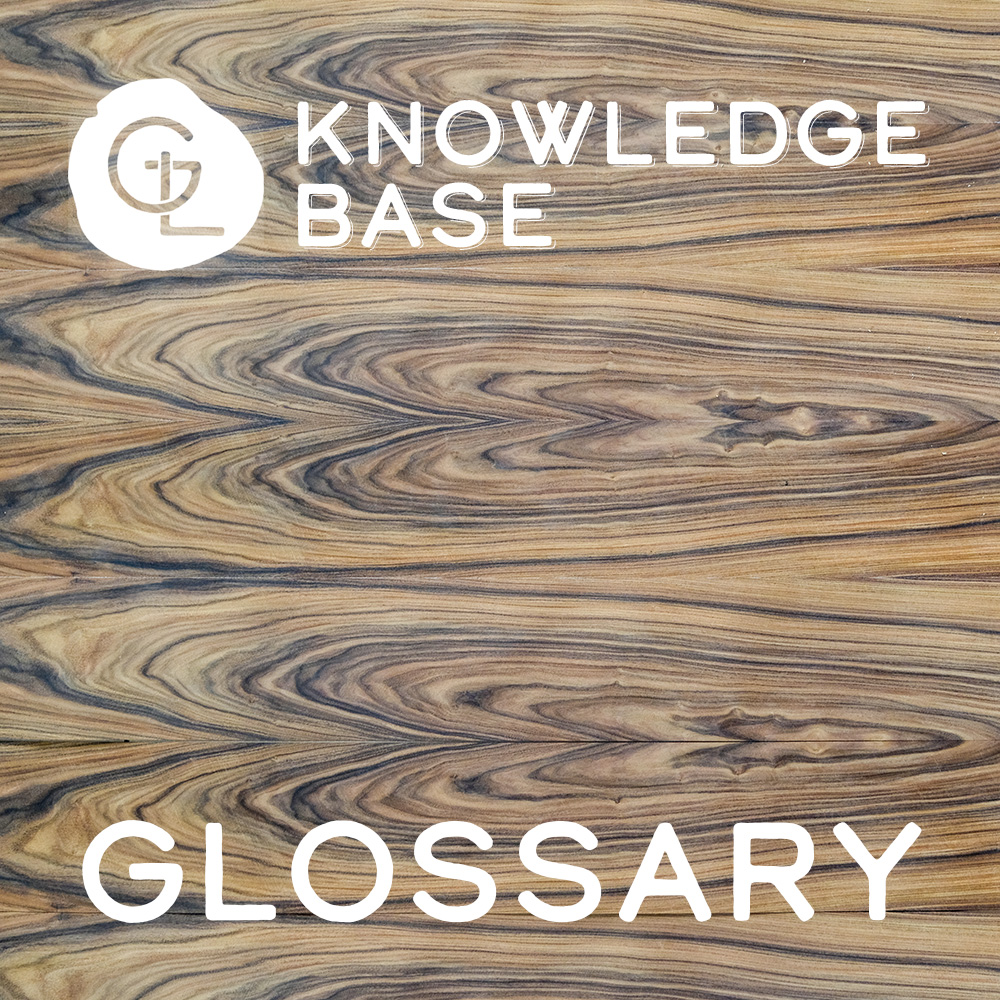10 Mil paper back Veneer
10 mil paper is applied to a stitched sheet of wood veneer. Generally comes in 4'x8' and 4'x10'. Useful for larger applications.
2 ply/WOW back Veneer
A crossgrain wood back is applied to a fully stitched sheet of wood veneer. Generally comes in 4x8 and 4x10. Good for non smooth surfaces. Can be used with contact cement.
Birds Eye
A natural occurrence, generally found in maple trees due to growth patterns within the rings. When cut rotary, birds eye patterns can occur and create elongating round circles.
Beeswing
A type of block mottled figure that is similar in look to the wing of a bee. It is primarily found in Anigre, bubinga, eucalyptus, african mahogayny, movingui, santos rosewood, and satinwood.
Book Match
When two sequential veneer leaves are opened like a book. By far the most common matching. In some species a light and dark patter can occur.
22 mil Paper Back Veneer
While very common for contact cement use, a wood backer is ideal when using contact cement.
Burl
A naturally occuring wart of a tree. When sliced open, it produces some of the most unique and stunning wood figures.
Cathedral
A common name for flat sawn or plain sliced wood. The resulting pattern is similar to a cathedral.
Center Match
When putting leaves together into a sheet, the center point is used to create a symmeterical look. It also uses the same number of leaves on each side and is always even.
Core
All veneer must be laid on a substrate. There are hundreds of different core. MDF, plywood and particle board are the most common.
Curly
A natural occuring curl that is primarily found in maple or birch, but can be found in other species.
Cut To Size
When dealing with large project, cut to size veneer and panels are created from the same lot and are made to exactly match a blueprint.
Flexible Wood Veneer Sheets
A common process of joining leaved into a 4x8 face and backing with special paper.
Flake
Most common in oak, the wood develops blotches or finger lines. Can be very heavy to very light.
Herringbone
A matching that is created by angling leaves at a center point that results in a herringbone pattern.
Reconstituted Veneer
A man-enhanced product. Generally uses a common wood such as popplar that is ground and reconstituted to create consistent 4x8 sheets.


